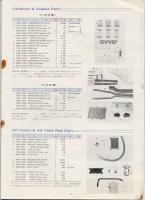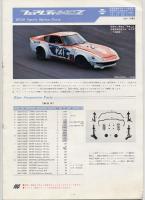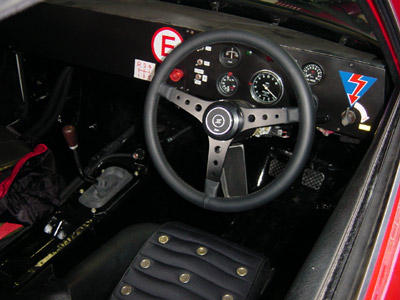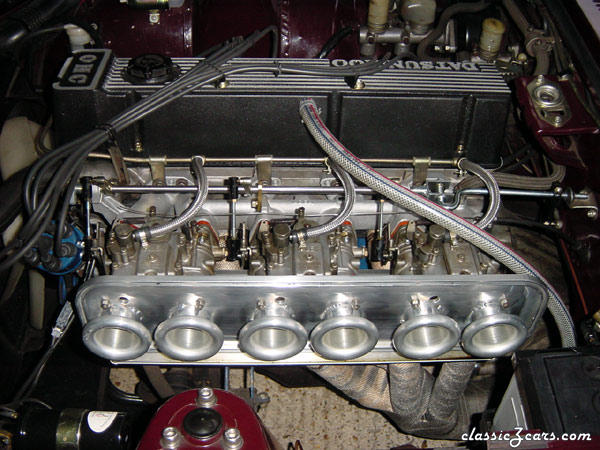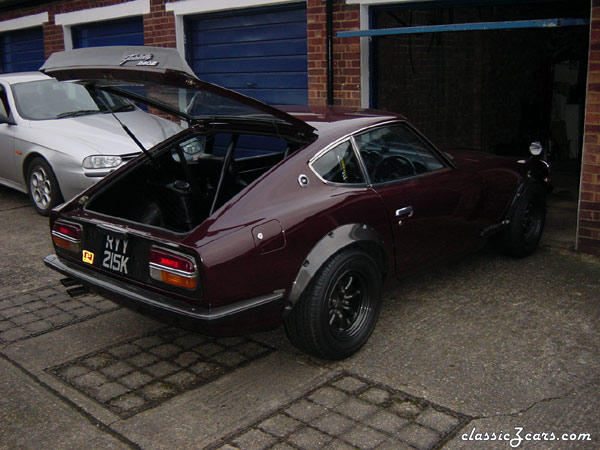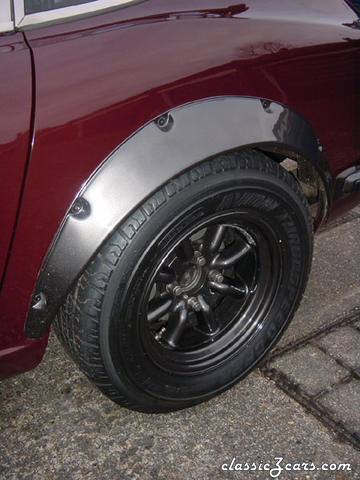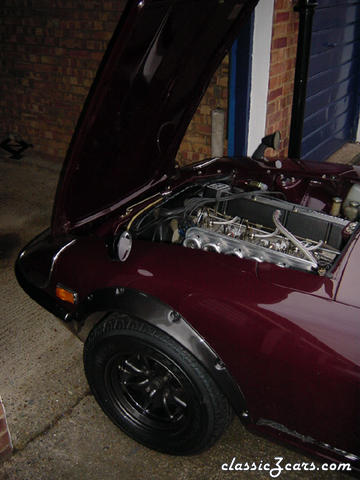Everything posted by HS30-H
-
Interior Ergonomics
Amen to all that you just said, and very well put too Enrique. It is a mystery as to what happened to the fine old art of Debate Without Confrontation. I remember one of my very first trips to Paris ( years ago - when I still had a hair-style ), when my friend and I were looking for a place to get a late-night drink in one of the dingier parts of St. Germain. We ended up in a very odd little bar, one of those places where the locals look around and go all quiet when you walk in the door. We decided to ask for some advice on what to drink, and the evening just became better and better. We got into all sorts of debates with the locals ( including the old chestnut of Winston Churchill vs. Charles De Gaulle ) and things got discussed quite passionately, not always eloquently, but the opinions of others were patiently listened to. In the end the whole lot of us were turfed out into the street at 5am by the owner - all on first-name terms, temporarily friends for life and with a new insight into eachother's thinking. If we had tried that in our own home town, I think we would have been in a fight before Midnight! It is indeed Nissan's fault that there are not any accurate production records for the S30-series Z ( and many other of their models ). Local market importers sometimes seem to have a better idea and more information on what they received than Nissan do of what they sent there. Australia seems to be a particularly good example of this. A good example of just how stupid Nissan were ( if a giant corporation can be called "stupid" ) is the way that they allowed the myth about Goertz to become bigger and bigger until its now almost irrefutable fact. Poor old Mr Matsuo was left out in the cold for so long, and now if you tell people he headed the design team of the Z they will not believe you. How dumb of Nissan to let that happen. I have a feeling that the "Task of a Lifetime" is a bit of an understatement when it comes to the History of this car. I myself have been gathering information on the area that I am particularly interested in ( especially the Factory race and rally cars ) but feel a very very long way from knowing even half the story. If I felt I had enough accurate information on that area I might even try to make an attempt at putting together a little book or booklet on the subject. Suffice to say that I still feel a very long way away from that day. I think the fact that the story of the car holds so much mystery and intrigue must be one of the reasons that I like it so much. Cheers! Alan T.
-
Interior Ergonomics
Enrique, you are quoting zhome. zhome in turn is quoting a famously wizz-poor book that was written by somebody in the corporation that had limited access to the facts, and was primarily engaged in making advertising bumph for the 280ZX. I don't blame zhome for quoting the figures ( there's not a lot else to go on and it all seems nice and tidy ) - but the figures are WRONG. That book is a perfect example of the lovely word "revisionism" that you dropped into one of your previous posts. Isn't it quite clear to all by now that Nissan Japan were completely disorganised in their record-keeping system around the late Sixties and early Seventies period? This might seem most un-Japanese to many people, but its famously true and rather well-known amongst Japanese Z-enthusiasts that I have spoken to. If the figures in that list were true, then all the RHD cars that I have seen in 1969 publications such as Car Graphic, Playdrive, Auto Sport and Auto Technic ( and including the cars on the show stand at the Tokyo Motor Show of 1969 that I posted a photo of above ) must be either fakes or figments of somebody's imagination. Suffice to say that the figures in the "280ZX" book are just plain inaccurate............. In fact, some of those "in the know" have hinted to me that Nissan did indeed know pretty much what they produced, but have only ever published what they wanted to be known. I'm not hinting at an Enron-sized scandal, but ask any accountant if the figures he writes in a ledger are 100% true. For my part, I believe in ****-ups rather than conspiracies. Chaos theory is usually king in this kind of situation. Just to put it straight once again in case anyone misunderstands that "first 500 VINs went to America" type of quote - the "HLS30" had its OWN numbering sequence. The S30-series Z range was like a pack of playing cards. Just because there's a Jack of Diamonds it doesn't mean that there are not Jacks of other suits. As I have written on this site many times before, theoretically there would have been individual cars in existence with the numbers S30-00240, PS30-00240, HLS30-00240 and HS30-00240. From physical evidence provided by cars that are still in existence, its possible to deduct that HS30-00240 was made AFTER the other three - but most definitely NOT that HLS30-00240 preceded the other two. Here's something that I don't think I've ever written here before. As far as Nissan Japan were concerned in 1969, the "star of the show" in their range was the 432. They had no idea that the HLS30 "240Z" was going to be such a runaway success ( although you can bet that they were HOPING it would be just as successful as Katayama was telling them it would be ) - and the main focus of the Japanese press coverage and public interest at the launch of the range was the most glamorous and exotic of them all - the 432. Of course, if you want to JUST look at sales figures as a mark of success or failure, then the 432 would be classed as the latter ( McDonalds syndrome ). By arguing the case for the RHD cars so strongly, it might be misconstrued that I am trying to prove that the RHD cars were in some way superior to the LHD cars. I'd rather let their specifications speak for themselves and let people decide what they prefer to believe in that respect ( both variants have advantages and disadvantages ). What I think is wrong, and what I am trying to even up the score on, is the unfair emphasis in the written history of the S30-series Z on just one local market variant ( yes - the market that was bigger than all the others combined ). That's why all the preceding talk of quantity and numbers is missing the point. That part of the story is a 'no contest' - in the same way that McDonald's would win a Michelin star if the quantity of hamburgers sold was part of the judging process. Yours etc, Alan T.
-
Interior Ergonomics
Hi Rolf, Yes, almost all markets except the USA / North American got the close-ratio FS5C71-A transmission and a suitable diff ratio right from the beginning of sales. This is not news to those of us in the UK, Australia and NZ ( and yourself in Germany ) - but it does seem to surprise a few American owners, a lot of whom seem to be searching for 5-speeds and 3.9 diff. ratios if posts on this site and others are anything to go by. When the "B" type ( 'bent stick' ) transmissions were introduced, the USA / North American market was STILL stuck with a 4-speed - while the rest of the Z world got the close-ratio "FS5C71-B", again with quite nicely-spaced close ratios. It seems that the "FS5W71-B" 'wide' ratio 5-speed was the first 5-speed to be offered in a car ( as opposed to the Datsun Competition lists ) in the USA / North American market. Is that correct? Interesting that your German-market GRLS30 had the passenger footrest fitted to it. By that time lots of funny things were happening at the factory. We have seen hybrid 240Z / 260Z cars here in the UK that shared parts of both models. All very strange, and it makes a nonsense of any factory data that you try to refer to when you need parts for these hybrid models. Cheers! Alan T.
-
Interior Ergonomics
I'm going to post a photo of one of the cars on Nissan's show stand at the 16th Tokyo Motor Show, which ran from 24th October to 6th November 1969. There were quite a few cars on the stand, and a lot of them were S30-series Z cars. They even showed an "Export" version ( as our colleague Kats recently pointed out ) and both a 432 ( "PS30" ) and 432-R ( "PS30-SB" ). I just wanted to post this picture to illustrate the 1969 show and its date:
-
Interior Ergonomics
....and here's the third photo. Its one of the prototypes from around mid 1968, and you can see that its getting really close to the final design. Notice that it too is RHD:
-
Interior Ergonomics
....and here's the second photo. Its a prototype from around early 1966. This was before the design was made wider, and a few detail changes were made. It is also RHD:
-
Interior Ergonomics
The first 500 S30-series Z cars EXPORTED were sent to the USA / North American market. These were not the first 500 S30-series Z's MADE. Even the LOWEST "HLS30" VIN number ( lets say for the sake of argument that "HLS30-00001" actually got sold to the public ) will not actually prove that the car was made before "S30-00001" or "PS30-00001", or even "HS30-00001". That's the whole point of the gripe about Z history being written around the Export cars - and the HLS30 in particular. English-language history writes the HLS30 "240Z" as the first of the breed or some kind of Darwinian ancestor to ALL the S30-series variants. Thats just not true. The S30 series Z was designed in Japan. It was made in Japan. It was put on show to the general public for the first time in Japan. RHD S30-series Z cars were sold to the general public first in Japan, and therefore RHD S30-series Z cars ( both Fairlady Z and Z-L, and 432 and 432R ) were being made on the production line either before or at the same time as the HLS30 "240Z" model. I have been assured by an original Z production line worker in Japan that the Export RHD version of the "240Z" ( the "HS30" ) was 'productionised" - or finalised for the assembly line - at the same time as the other models, but the first production of cars for sale to the general public was delayed. Apparently, this was due to production line space and the fact that the HS30 had to conform to Type Approval laws for both the Australian / NZ and UK markets ( causing spec. changes in lighting ). Many people seem to believe that the S30-series Z car was designed AS an LHD car, rather than either being designed for both LHD and RHD use, or designed initially as an RHD and productionised with an LHD version. For those people I would like to post the following photos. I have more - but space here is slightly restrictive and I think that these three might help to illustrate my points. Here's the first: its a styling sketch from the late 1965 / early 1966 period by Yoshihiko Matsuo. Notice that he has drawn an RHD car:
-
240Z Competition Parts Catalogue
- and here's a copy of Page 5 with the carbs and manifolds on it. The total document is 12 pages long and its pretty comprehensive. Size restrictions will limit me to posting just a reduced copy here - but I can e-mail you some big files if you have the space and no restrictions on your e-mail. Let me know. All the best, Alan T.
-
240Z Competition Parts Catalogue
Hi Alan, I have the December 1973 version for the S30 / HS30. I used to have an earlier one for them too - but made the mistake of lending it to a classic car magazine here in the UK. Never got it back - they "lost" it. Great. I also have the 432 / 432R one, but that will not help you as the scrutes will look at the VIN code on your car and conclude that its not a "PS30". Good luck with trying to persuade them to let you use the carbs ( and all the rest of the Sports Option stuff ) - the Historic circuit racing guys here in the UK have tried to get this stuff allowed before now, but the cloth-cap brigade won't let 'em ( even though they allow all sorts for the British and Italian cars ). The poor Z cars have to run virtually stock - not even LSD! The Historic Rally guys have it quite a lot better, as its run under FIA rules - so all the FIA homologated stuff ( up to around 1978 ) can get in OK. Will your local scrutes not allow stuff under FIA homologation? Anyway, here's a copy of the title page:
-
Interior Ergonomics
-
Interior Ergonomics
Zedrally - I think the Choke ( and Hand Throttle ) positioning on the RHD cars is just fine. Don't you? All things considered, their position is a default if the Handbrake lever is on the right of the tunnel. Sean, in answer to your query about the Passenger Foot Rest ( entertainingly called the "Navigator's Foot Rest" in the Japanese sales catalogues ) - this was an Option part in Japan. It could be specified on any of the early Japanese-market cars for a small extra cost. Most of the Japanese-market bodyshells that I have seen had the strengthened mounting bosses on the passenger footwell ( they were spotwelded on and sealed with rubber bungs if not used ). This made the footrest a bolt-on accessory. To my knowledge, no export model cars had these bosses spotwelded to the floor from the Factory ( but I have seen a couple of export-model cars that seem to have had them added later ). Japanese-market cars also had the extra front seat-rail mount brackets ( allowing the seats to have two different bolt-down positions for the runners ). Notice that the REAR brackets always have two sets of holes - more Z hermaphrodity. Did anybody ever wonder about them? Many people who have had a ride in the passenger seat of my ZG comment that the footrest is a handy thing to be able to use. You can hook your toes underneath it or put them on top to brace yourself when you are convinced that the driver is going to have another off track excursion. Not all of these people were shorties either. One genius even noted that it allowed him to keep his feet away from the exhaust heat on that side of the tunnel. Any of you left hooker owners ever feel slightly overwarm in the throttle-foot department? Time for a Gipsy's kiss and a cup of Rosy Lee I think, Alan T.
-
Interior Ergonomics
Thanks for the Internet history lesson Enrique. I do appreciate that the country where a website is based is going to influence its bias, but we ARE talking about the history of a Japanese car. I can't believe that anybody would be so taken in by its local distributor's advertising copy and marketing hype that they truly believed stuff like the "full size American space" quote. But then again, it was the end of the Sixties and perhaps we were all quite a lot more gullible then. I wonder if American buyers of British "Sports" cars of the same period had the same kind of advertising fired at them? One of the reasons that these British makes started to die out was that customers came to realise that they were having a re-heated version of last-week's leftovers put in front of them. Whatever, yesterday's advertising copy should not be allowed to become today's gospel. Ah yes, about my Horn Pad........ Chief Inspector Scanlon certainly spotted that my horn buttons are in rotation ( nothing gets past you does it?! ). I use either a "Datsun" logoed horn button, or the Japanese-market "Z" logo button depending on whom I'm trying to impress. The "Datsun Compe." Sports Option-list steering wheel was ( somewhat ironically in view of the above discussions ) branded with the "Datsun" logo in Japan. Many Japanese Z enthusiasts find the "Datsun" logo something of a rarity / novelty. There are others who prefer not to have the "Datsun" brand on the car. I swing both ways ( but don't tell anyone - OK? )........ This does not seem to apply in the USA, but over here in the land of cloth capped, tweed-jacketed and pipe-smoking "Sports" car enthusiasts, the "Datsun" brand is something of a joke. This makes it rather amusing to turn up in the paddock of a VSCC or HSCC race meeting in something that most of these dinosaurs do not recognise. Its nice to see their expressions change when they see the word "Datsun" on the car. Most of them would recognise the shape of a "normal" bodied S30-series Z, but 99% of them have no idea what a Fairlady 240ZG is. Of course the next question is "why" I riveted on those tacky flares and the 250GTO bodykit. Almost nobody believes it left the factory like that. This is why I am trying to put together a Fairlady Z432-R replica. I can't afford to buy a real 432 and then turn it into an "R" replica, but its possible to make a pretty good job from an early Japanese bodyshell and put some REAL parts on it. I REALLY want other people to hear, smell and see an early Z with an S20 engine in it. I'd love for everybody on this site to experience it too, and when its finished I am giving an open invitation for anybody who is interested to come and have a drive. Although they are not ultimately all that powerful, its the balance of the 160-odd BHP in a light shell driving through a close-ratio 5-speed to an LSD-equipped 4.44 geared diff and on skinny tyres, that is so good. Add that extra ingredient of a little mystery and rarity, and you have what amounts to the perfect Z Martini........... Cheers! Alan T.
-
Works 240ZR dash
This is a race-only dash, custom-built by the Factory race team. The earlier Factory race cars used a chopped-about version of the stock dash. This car is later, and dispensed with the stock dash completely.
-
Bought a 240z today, Perth WA.
Ouch! You just hurt my car's feelings! Seems not everybody likes the Japanese home-market mirrors, but "abominations" is a perhaps a bit strong!........... Still - at least you'll be able to turn them into money. What's the plan for filling in the massive holes they will leave in your front guards though? The spring-back mount for the JDM mirrors is enormous. They are a little like icebergs; what you can see sticking out is only half the story................ Alan T.
-
Fairlady 240ZG
Yes, its a big help actually. It reduces heat-sink into the carbs and engine bay, but its expensive and quite difficult to make a neat job of installing it. Definitely recommended.
-
Fairlady 240ZG
Hi Gav, the 432R replica is currently living in the paint and body shop. Its been there a long time already, as its having work done on it when there is space ( to get a cheaper rate ). I'm busy gathering other parts for it - so it suits me fine. Its re-assembly home will be in another of these lock-up garages as in the pic. above. Good point about the heating in the 432R ( you are right - the "R" model had no heater at all ). I think I will have to compromise, as no heat / demisting is a real problem here in the UK. I will probably just block off the eyeball and centre dash vents. Some street-used R's had heaters retro-fitted by their owners - so I have a precedent there.
-
Fairlady 240ZG
If that row of garages was all mine I'd be able to live off the proceeds of renting them out! Here in London, there's a real shortage of covered parking. I rent three of these and they are a good 30 minute drive across town, but still expensive.
-
Interior Ergonomics
Morning all, Don't forget that my ZG is a Japanese Home market only model. The Japanese Home market cars had almost nothing on them identifying the "Datsun" branding of the export cars.............. This even went down to the detail of the door sill step finishers, which were plain instead of "Datsun" scripted. Also, the steering wheel on my car is a rather rare "Datsun Compe" item - and can use the steering wheel boss from the stock steering wheels. I have chosen to use it with the Japanese Home market "Z" script boss - which the car would have originally had on its steering wheel. Japanese market Z cars hardly had the "Datsun" brand on them anywhere. In fact I'm trying hard to think of a component that had the Datsun brand on it - but can't think of one. In Japan the Z is a Nissan - not a Datsun. Alan T.
-
Fairlady 240ZG
From the album: Fairlady 240ZG ( HS30-H )
Squeezing into a London-sized garage. -
Fairlady 240ZG
From the album: Fairlady 240ZG ( HS30-H )
Squeezing into a London-sized garage. -
Fairlady 240ZG
From the album: Fairlady 240ZG ( HS30-H )
Engine near-side. -
Fairlady 240ZG
From the album: Fairlady 240ZG ( HS30-H )
Near-side rear wheel. -
Fairlady 240ZG
From the album: Fairlady 240ZG ( HS30-H )
Near-side front wheel. -
Interior Ergonomics
By the way, that "An American car, built in Japan" quote was from www.zhome.com - and the "Z History" section of that site contains some very interesting theories. There is a lot of stuff in there that I totally agree with, but a few things that are perhaps somewhat overstated............ The last time I criticised zhome here on 240z.org I very swiftly got my knuckles rapped. However, I think zhome is big enough to take a little critique and I'm not daffy enough to think that my opinions will cause anything on that site to get changed. The biggest problem I have with a lot of the English-language writing on the S30-series Z in general ( notice I didn't say "240Z" - as its only ONE version of the S30-series ) is that it almost totally writes off the Home market and RHD export market cars. Its like they almost didn't exist. The "HLS30" version of the S30-series Z became the most successful of the range in terms of numbers sold - but this should not be allowed to crowd out the fact that the S30-series Z debuted in Japan and RHD versions were productionised alongside the LHD versions. I think if you read the stories, and particularly on zhome, it would be all too easy to believe that the "HLS30" 240Z was some kind of father to ALL models of the early Z car. This is quite definitely and positively NOT so. The people who designed and built the car certainly do not accept the LHD version as definitive, so why is so much emphasis put on that model when the model's history is under discussion? These "other" models were designed and productionised alongside the "HLS30" 240Z, but very rarely are they given credit for being there at the beginning of the story. Sorry if it seems as though I'm trying to "knock" the HLS30 and America in some way. That's just not the case. I'm trying to stick up for the RHD versions as they seem to be crowded out of the story, and add a little balance. Generally speaking, early Z owners from the USA / Canada seem to be very interested in the models of Z that they never had in their particular market. I very often receive nice PM's and messages about my own ( Japanese market ) cars, and people ask very pertinent and interesting questions. One thing that seems to surprise many of them is that the 432 was made from late 1969 - just like the HLS30 - and that other markets had 1969 and 1970 models with 5-speed transmissions and rear anti-roll ( "sway" ) bars. There's often surprise shown when the contents of the Japanese "Sports Option" lists are revealed, and they can see the depth and quality of parts that were never seen outside Japan. When I myself first discovered all this, it dawned on me that I didn't know the half of the true story of the cars that I had come to love. Unfortunately, it seems that some out there would prefer not to know and are happy with the story as dished up in badly-researched magazine articles ( especially in my own home country ) and half-baked books that purport to tell the "Complete" story. Hats off to zhome for trying to get beyond that, but I think there's still much too much emphasis on just one local-market variant. Maybe I'll be admonished for being negative or something, but I think its worth trying to make the point all the same. Sometimes it feels a little like preaching the New Testament in Baghdad, though!......... Cheers, Alan T.
-
Interior Ergonomics
Yes, sorry - I can see now that I was not making it clear that I was referring to badly-engineered RHD versions of cars from LHD markets ( like my Alfa Romeo 156 - which infuriatingly has the indicator stalk on the LEFT side of the column, which makes the busy nature of negotiating busy London traffic a real pain ). I was trying to point out that Nissan thought of this point, and very kindly placed the indicator stalk on the left side of the column for LHD cars, and on the right side of the column for RHD cars. Thus leaving us free to change gear with one hand and flick the indicator stalk with the fingers of the other hand. There's a joke in there somewhere but I'm damned if I can find it... Alan T.









